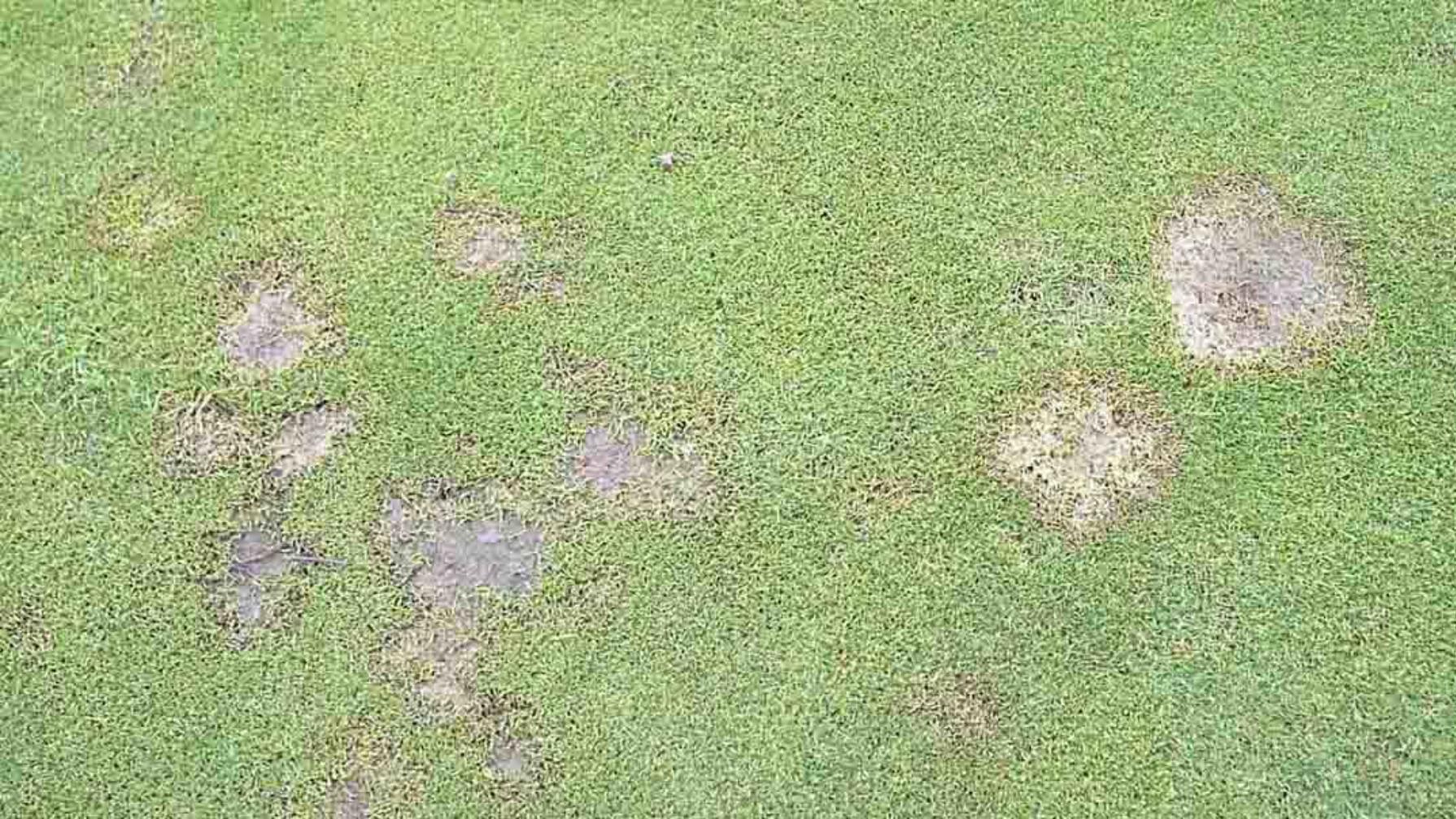- Homepage
- News and Features
- Propiconazole withdrawal: what does it mean?
Propiconazole withdrawal: what does it mean?

Dead patches of turf caused by Fusarium
The active ingredient found in products such as Syngenta’s Banner Maxx, Headway and Instrata will be withdrawn from sale over the coming months.
The EU Commission announced its decision not to renew the approval for the fungicide active ingredient, propiconazole, in a move that was supported by the UK Government.
But what does it mean for the UK's greenkeepers?
The EU Standing Committee on Plants, Animals, Food and Feed (SCoPAFF) has decided not to approve propiconazole under Regulation (EC) 1107/2009.
This means that all products containing propiconazole will now be withdrawn from the market in all sectors under the following timescales.
- Last sales by distributors to end user 19 June 2019
- Last legal use and storage by end users 19 March 2020
It’s worth noting that in Ireland, propiconazole products can continue to be sold until 19 December 2019, but the final use up date is the same at 19 March 2020.
Propiconazole is a broad spectrum fungicide is used to treat a wide range of turf diseases such as Fusarium Patch, Dollar Spot, Anthracnose and Brown patch.
All products containing propiconazole will be withdrawn from use, across the EU and under the same timescale. It’s not just turf; agriculture and horticulture will lose all propiconazole products too.
The loss of propiconazole-containing products will reduce the options available to greenkeepers. But importantly it will also remove chlorothalonil, which is the only multi-site active ingredient registered for turf. This is contained in Instrata and co-formulated with propiconazole and fludioxonil.
There is no direct replacement for this product and it’s not possible to put together a tank mix to include chlorothalonil, since the straight product is not registered on turf.
Once Instrata is no longer available, greenkeepers will only have four modes of action available, so a careful integrated approach to disease management will be necessary. This will combine cultural, biological, nutritional and chemical techniques.
The major difference going forward will be the need for a preventative programme for fungicide control – none of the available active ingredients have the same curative power of the products which are no longer available, such as iprodione and chlorothalonil.
Greenkeepers will need to be vigilant and learn how to spot either the very first signs of disease or to monitor weather conditions in order to predict when disease is likely to occur. The primary action for clubs will be to budget for a preventative programme, because these are likely to be more cost effective than trying to eradicate disease which has already become established.
There are still two triazole DMI active ingredients registered in the UK, but both are co-formulated with other active ingredients to broaden the spectrum and protect against resistance. They are tebuconazole, available as Dedicate, and difenoconazole, available in Instrata Elite.
However, much of the research investment now turns to developing new fungicide solutions for turf, with a focus on a direct replacement for the agronomic role of propiconazole.
Syngenta is aiming to launch a new fungicide early in 2019, designed to fill that gap. Based on an innovative class of chemistry, it is already in the regulatory authority registration process, and offers an exciting replacement for propiconazole products. Trials show it delivers effective and broad spectrum activity, with lower active ingredient loading.
Why was propiconazole banned?
Propiconazole was one of the earliest DMI (triazoles) fungicides discovered back in 1970’s by Janssen Pharmaceuticals. The active ingredient was then further developed by Ciba who have since morphed over the years into Syngenta.
Under EU regulation, all active substances must undergo a regular review (normally every 15 years). This requires the regulatory package for the active ingredient to be updated and all scientific papers on the active are assessed. The EU has been studying the registration package for propiconazole since 2015.
Following a peer review published 12 July 2017, several key studies were requested, including ground water studies. Also running alongside this process, the EU were studying the impact of endocrine disruptors (ED) on the environment. Endocrine distrupters are chemicals that may interfere with the body's endocrine system and produce adverse developmental, reproductive, neurological and immune effects in humans and wildlife.
A wide range of substances, both natural and man-made, are known to cause endocrine disruption, including pharmaceuticals, polychlorinated biphenyls, a number of pesticides, and plasticizers such as bisphenol A.
Endocrine disruptors may be found in many everyday products – including plastic bottles, metal food cans, detergents, flame retardants, food, toys, cosmetics, and pesticides. Scientific debate is still ongoing to determine a safe level for these type of products under today’s regulatory requirements.
The EU Standing Committee on Plants, Animals, Food and Feed (SCoPAFF) decided that propiconazole did not pass the latest regulatory requirements and has therefore decided not to include this substance on the approved list.
Syngenta, maintains the position that propiconazole does not pose a risk to human health or the environment, when used in accordance with current label recommendations.
BIGGA recently took at how the loss of certain products will have a potential impact on the appearance of courses going forwards.
Author

